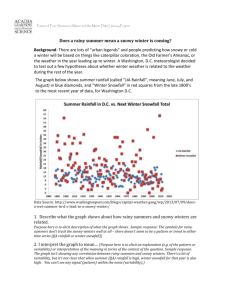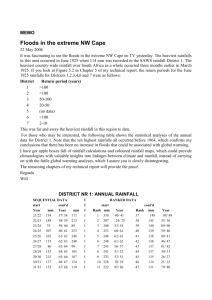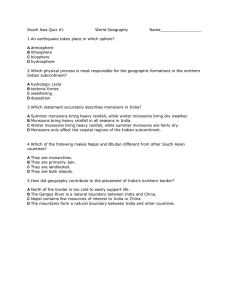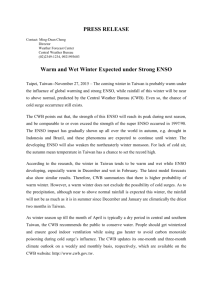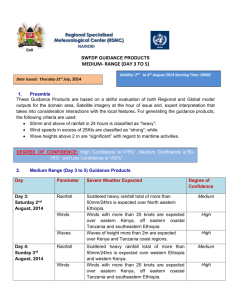CHINA
advertisement
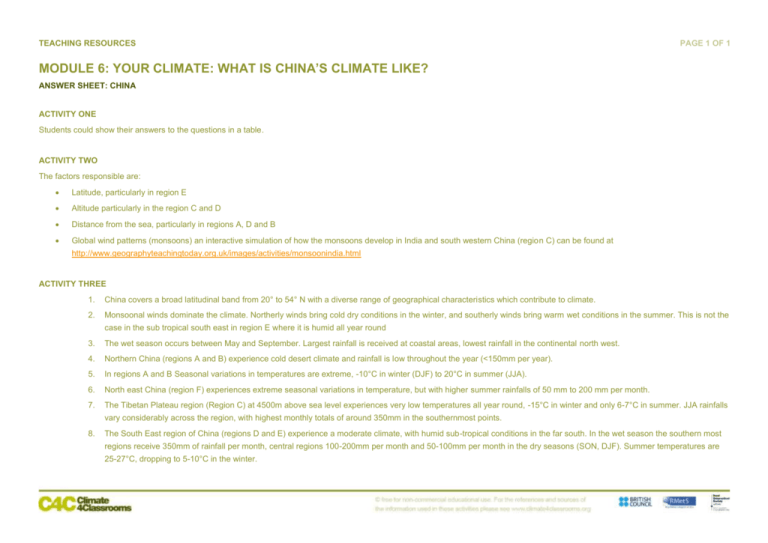
TEACHING RESOURCES PAGE 1 OF 1 MODULE 6: YOUR CLIMATE: WHAT IS CHINA’S CLIMATE LIKE? ANSWER SHEET: CHINA ACTIVITY ONE Students could show their answers to the questions in a table. ACTIVITY TWO The factors responsible are: Latitude, particularly in region E Altitude particularly in the region C and D Distance from the sea, particularly in regions A, D and B Global wind patterns (monsoons) an interactive simulation of how the monsoons develop in India and south western China (region C) can be found at http://www.geographyteachingtoday.org.uk/images/activities/monsoonindia.html ACTIVITY THREE 1. China covers a broad latitudinal band from 20° to 54° N with a diverse range of geographical characteristics which contribute to climate. 2. Monsoonal winds dominate the climate. Northerly winds bring cold dry conditions in the winter, and southerly winds bring warm wet conditions in the summer. This is not the case in the sub tropical south east in region E where it is humid all year round 3. The wet season occurs between May and September. Largest rainfall is received at coastal areas, lowest rainfall in the continental north west. 4. Northern China (regions A and B) experience cold desert climate and rainfall is low throughout the year (<150mm per year). 5. In regions A and B Seasonal variations in temperatures are extreme, -10°C in winter (DJF) to 20°C in summer (JJA). 6. North east China (region F) experiences extreme seasonal variations in temperature, but with higher summer rainfalls of 50 mm to 200 mm per month. 7. The Tibetan Plateau region (Region C) at 4500m above sea level experiences very low temperatures all year round, -15°C in winter and only 6-7°C in summer. JJA rainfalls vary considerably across the region, with highest monthly totals of around 350mm in the southernmost points. 8. The South East region of China (regions D and E) experience a moderate climate, with humid sub-tropical conditions in the far south. In the wet season the southern most regions receive 350mm of rainfall per month, central regions 100-200mm per month and 50-100mm per month in the dry seasons (SON, DJF). Summer temperatures are 25-27°C, dropping to 5-10°C in the winter.




